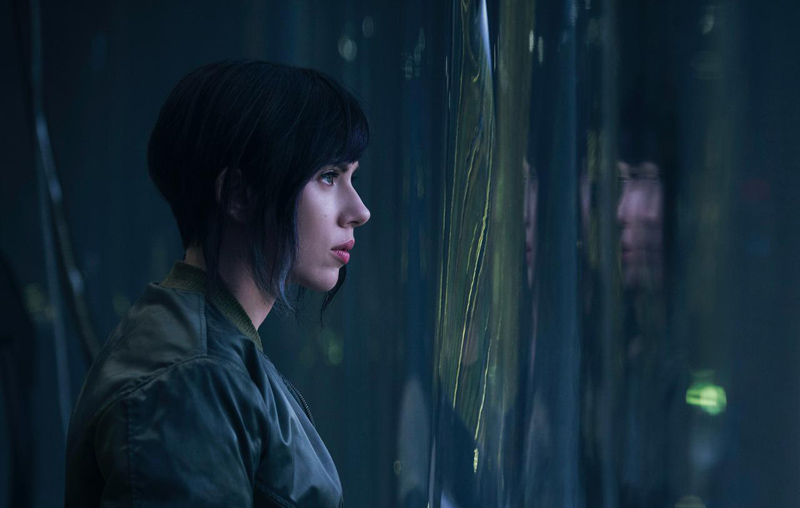The art of remaking is the art of finding new angles. All art must justify its existence, and merely recreating the old with a slightly different coat of paint is the quickest way to fail at that. Good remakes take their predecessors’ basic concept in new directions: The Magnificent Seven applied Seven Samurai’s deconstruction of the romanticized wandering ronin to the wandering gunslinger, and Invasion of the Body Snatchers turned anti-communist propaganda into a criticism of willful urban blindness. But this always depends somewhat on the broadness of the original premise, and how easily it can be re-suited to a new purpose.
You wouldn’t expect this to be a problem with Ghost in the Shell. Since 1989 the franchise has told the story of Major Motoko Kusanagi, a cyborg secret police officer working for the cyberpunk dystopia the eighties always threatened to turn into.
online pharmacy purchase levaquin online best drugstore for you
In books, films and TV series it’s explored politics, espionage and the concepts of gender and identity in a world where human bodies can be switched out at the drop of a hat. And years after Hollywood already ran its aesthetic into the ground with innumerable Matrix ripoffs, the remake train finally came calling.
The American Ghost in the Shell follows Major Mira Killian (Scarlett Johannsen), the first of a new kind of cyborg whose body is entirely synthetic. As the film begins her and her Tokyo government anti-terrorism squad, headed by a check-cashing Takeshi Kitano, are hunting a mysterious terrorist called Kuze who hacks into people’s minds to make them do his bidding. However, as the trailers have already spoiled, Kuze is actually a failed prototype of Mira created by the local branch of Weyland-Yutani. Both were kidnapped, butchered and mind-wiped for their super-soldier program and Kuze is out for revenge. So inevitably our hero must go on the run and fight back against her creators.
The film’s first stumbling block is its director, Rupert Sanders. He clearly knows how to do various cinematic techniques but doesn’t know why to do them, so his films feel like an assembly of poorly-fitting jigsaw pieces. Every individual shot looks stunning, but they never come together into anything more, resulting in a movie where nothing makes any real impact.
Ghost in the Shell‘s approach to adaptation also fails it — this is one of those fan adaptations where iconography and moments from the source material are simply dumped in with no regard for if they make sense in the new work. Whole characters like Togusa exist solely because they were in the animated movie, but it’s the action scenes that are the worst. Directionless rehashes of the bin lorry chase and the climactic tank fight just kind of happen without reason or purpose. The latter is particularly surreal, as the villain just happens to have a giant spider tank in the middle of a city for no reason whatsoever.
But the film’s most crippling flaw is that it never really builds up to anything. The first forty minutes are actually quite compelling, introducing various ideas, plotlines and themes, but none are paid off in any way. Mira is given strong building blocks for a character arc in both her feelings of disconnection from the world and a desire for a sense of identity (she has no memories prior to becoming a cyborg), and in her nature as the first of a new kind of being.
And here we get into the film’s racial politics. News of Johannsen’s casting produced a great outcry before the film’s release, as another instance of Hollywood refusing to grant roles to Asian actors, but the film takes this problematic concept and proceeds to dig itself so deep it emerges on the moon. You see Mira Killian is actually Motoko Kusanagi, a Japanese teenage runaway whose brain was transplanted into Scarlett Johannsen, and the film works so hard to deny the character’s Japanese-ness you’d think it was directed by the family from Get Out. It goes out of its way to avoid letting you see her real face or hear her real voice, either in the flashbacks to her abduction or in photographs when Motoko visits her mother. We only ever know her as a white American woman. The worst part is at the end though, when she repeats a variation on an earlier mantra beginning “My name is Mira Killian”.
But instead of giving her real name, she simply says “My name is Major”.
The film ends up stating that by losing her original body, she has shed her Japanese identity, a move so horrifically misjudged I spent the entire final third visibly cringing once I realized where it was going.
She begins the film searching for an identity, but neither re-embraces her old self nor finds a new one. The film tries to mirror her character with Kuze’s, and in this it seems to be building up a similar concept of human evolution through technology that the original film and manga concluded with. But this would require them both leaving their Umbrella Corp-manufactured bodies behind, which can’t happen because the demands for a franchise require her to stay as Scarlett Johannsen.
Remaking Ghost in the Shell in 2017 was a bad idea from the beginning. As I wrote before, the original’s genre and style is so rooted in its time that the world today no longer resembles it, and no matter what new ideas you bring to the table they will always be viewed through the prism of a time long gone. Whatever you do something will always feel off.
online pharmacy purchase doxycycline online best drugstore for you
And if you do manage to update it to the modern day it won’t be Ghost in the Shell anymore, but something closer to an action remake of Black Mirror. And hopefully it wouldn’t be the most racist thing I’ve seen at the cinema in quite some time.








